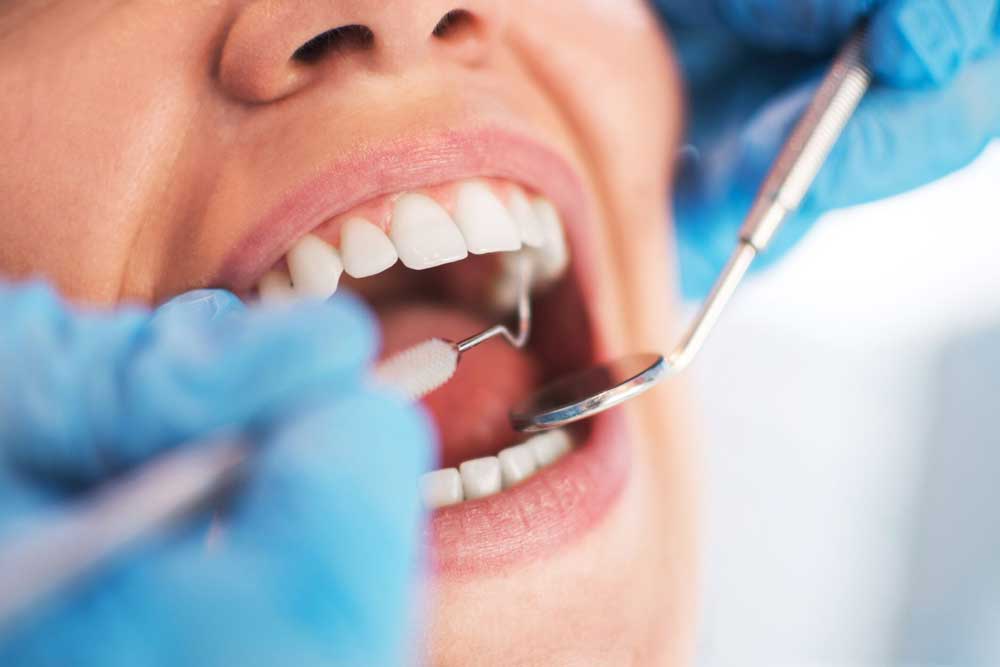
Whitening for Sensitive Teeth: A Professional Dentist’s Guide for Mumbaikars
If you’ve ever sipped on a steaming cup of chai and felt a sudden, sharp twinge in your tooth—or maybe taken a bite of that kulfi and nearly jumped from the sting—chances are you’re dealing with tooth sensitivity. As a practicing dentist with years of experience serving patients in Sewri, Dadar, Matunga, Antop Hill, Sion, and Ghatkopar, I’ve encountered countless Mumbaikars who want whiter teeth but worry about the discomfort that might come with standard whitening methods.
Good news: having sensitive teeth doesn’t mean you’re stuck with a dull or discolored smile. With the right precautions and tailored techniques, you can safely whiten your teeth without cringing each time you see an ice-cold glass of water. In this article, we’ll walk through everything from what causes sensitivity to the best ways to whiten while minimizing discomfort. So, grab that cutting chai (at a comfortable temperature), and let’s dive in!
Understanding Tooth Sensitivity
What Exactly Causes Sensitivity?
Tooth sensitivity happens when the protective outer layer of your teeth (enamel) gets thinner or compromised. This can happen for several reasons:
- Brushing Habits: Brushing too hard or using a hard-bristled toothbrush can wear away enamel over time.
- Diet: Consuming a lot of acidic foods (think lemons, pickles, soft drinks) can erode enamel, making your teeth prone to sensitivity.
- Gum Recession: When gums recede, the sensitive root surfaces of your teeth can become exposed.
- Genetics: Some of us are simply more prone to sensitivity due to our DNA.
In my practice, I once met a young woman from Dadar who loved her morning orange juice. She had no idea that sipping on acidic juices—without brushing or rinsing right after—was contributing significantly to her tooth sensitivity. A few small habit changes, combined with a gentler brushing technique, made a world of difference before we even started talking about whitening.
Spotting the Signs
If you find yourself wincing whenever you eat or drink something hot, cold, sweet, or sometimes even just from cold air, that’s a red flag. Sensitivity can also be a sign of deeper dental problems, like cavities or gum disease. Before you jump into any whitening routine, it’s crucial to figure out the root cause of your discomfort (pun intended!). A quick visit to a local dentist in Sewri or Matunga can help identify whether you have underlying conditions that need attention first.
Evaluating Whitening Options for Sensitive Teeth
Now that you know what tooth sensitivity is and why it happens, let’s explore some whitening methods. Not all whitening treatments are created equal—especially if your teeth are prone to sensitivity.
Professional In-Office Treatments
1. Customized Approach
When you step into a dental clinic in, say, Antop Hill or Ghatkopar, a trained dentist will assess your level of sensitivity before recommending any whitening procedure. This might involve special desensitizing agents, protective gels, or lower concentrations of bleaching ingredients to ensure minimal discomfort.
2. Immediate Results
Laser or LED whitening treatments typically use controlled peroxide concentrations. The advantage? You could see a noticeable improvement in a single session. Because your dentist is right there, they can reduce the intensity if you start to feel uncomfortable.
3. Ideal for High Sensitivity
Professional clinics often have strategies to manage high sensitivity—like applying fluoride or using specially formulated gels post-whitening. This extra layer of care can significantly reduce the risk of ouch moments later on.
Personal Anecdote:
I once treated a young businessman from Sion who had a very important presentation coming up. He had severe sensitivity due to thin enamel, but wanted a whiter smile for his big day. We used a lower-strength peroxide solution under strict supervision. Afterward, we applied a desensitizing fluoride treatment. He felt only minimal discomfort, and his teeth looked noticeably brighter for that career-changing meeting.
At-Home Whitening Trays Prescribed by Dentists
1. Tailored Fit
Unlike one-size-fits-all drugstore trays, dentist-prescribed trays are molded to your teeth. This reduces the chance of bleaching solution leaking onto your gums—a common cause of discomfort or even minor burns.
2. Gradual Process
Because the gel concentration is often milder than in-office treatments, the whitening happens more gradually. This slower pace can be a good thing if you’re dealing with sensitivity, as it gives your teeth time to adapt.
3. Professional Oversight
You’ll typically have a follow-up appointment to check how your teeth are responding. If the sensitivity is too high, the dentist can adjust the concentration or recommend a rest period.
Over-the-Counter Whitening Kits for Sensitive Teeth
1. Low-Concentration Formulas
These are widely available in pharmacies across Mumbai. They contain mild bleaching agents designed for a gentler whitening experience. However, they can still cause sensitivity if not used correctly.
2. Risks and Limitations
Even though these products claim to be for sensitive teeth, you can’t be entirely sure if they’re right for your level of sensitivity. Plus, poor tray fit or leaving the product on too long can irritate your gums and exacerbate any existing discomfort.
3. Caution Advised
Always read the instructions thoroughly and consider consulting a dentist beforehand. It might cost a bit extra to get professional advice, but it could save you from unnecessary pain and potential enamel damage.
Preparing for Whitening: Steps to Minimize Sensitivity
Initial Dental Checkup
Before you do anything, schedule a thorough exam with a local dentist. Whether you live in Dadar, Ghatkopar, or Matunga, you want someone who can catch potential issues like cavities or gum disease. A professional cleaning (scaling and polishing) is often recommended before starting any whitening treatment to ensure your teeth are plaque-free.
Strengthening Your Enamel
- Fluoride Products: Using a fluoride toothpaste or mouthwash can help fortify your enamel.
- Remineralizing Solutions: Some dentists might prescribe remineralizing treatments that repair minor enamel damage.
Desensitizing Products
If your teeth are extra sensitive, you can start using a desensitizing toothpaste (like Sensodyne or similar products) a couple of weeks before your planned whitening treatment. This helps block the tiny canals (tubules) that lead to the nerve center of your tooth, reducing sensitivity.
Pro Tip:
During these weeks of preparation, steer clear of very hot or icy drinks to avoid aggravating sensitivity. Also, a soft-bristled toothbrush can work wonders in preventing additional enamel wear.
Post-Whitening Care and Maintenance
Immediate Aftercare
Right after you’ve undergone a whitening session—be it in-office or at home—your teeth are likely to be more porous for a little while. This means they can quickly absorb strong colors from foods or drinks, or feel extra sensitive to temperature changes.
- Avoid Hot/Cold Foods: Try not to consume piping hot tea or chilled beverages for at least 24 hours.
- Skip the Dark-Colored Fare: Coffee, tea, red wine, even spicy curries—anything that might stain your clothes could also stain your freshly whitened teeth.
- Use a Straw: If you must indulge in your favorite beverage, use a straw to minimize direct contact with your teeth.
Ongoing Sensitivity Management
- Desensitizing Toothpaste: Keep using it to maintain lower sensitivity levels.
- Monitor Your Pain Threshold: If you notice the sensitivity is persisting or worsening, talk to your dentist. They may recommend a pause or a different approach.
- Gentle Brushing: Overzealous brushing can further irritate sensitive teeth.
Follow-Up Appointments
Scheduling a check-up every six months or as recommended is crucial to ensure that your whitening results last and that sensitivity stays in check. Your dentist can also suggest touch-up treatments if you’re looking to maintain that extra sparkle.
Lifestyle Tips for a Long-Lasting White Smile
Oral Hygiene Practices
- Brush Twice a Day: Use a soft-bristled brush and fluoride toothpaste. Focus on gentle, circular motions.
- Floss or Use Interdental Cleaners: This helps remove plaque between teeth where the toothbrush can’t reach.
- Rinse After Meals: Swishing water around your mouth can help wash away staining particles.
Dietary Modifications
- Reduce Sugary and Acidic Foods: These can weaken enamel. If you can’t resist a cold glass of soda, drink it with a straw and rinse your mouth afterward.
- Boost Calcium and Vitamin D: Consuming dairy products, leafy greens, and getting enough sunlight helps keep teeth strong.
Habits to Avoid
- Smoking and Tobacco Use: These are big culprits in both teeth staining and gum recession.
- Excessive Coffee or Tea: Limit your intake or rinse immediately afterward to prevent staining.
- Teeth Grinding (Bruxism): If you grind your teeth at night, talk to your dentist about a night guard to protect your enamel.
My Personal Anecdote: A “Sensitive” Journey to a Brighter Smile
Let me share a quick story about my uncle who lives in Ghatkopar. He’d always been conscious of his slightly yellowish teeth but refused any sort of whitening due to severe sensitivity. After a thorough exam, we realized a key factor was his bruxism (nighttime teeth grinding), which had worn down his enamel.
First, we fitted him with a night guard to protect his teeth. Then, for a few months, he used a special remineralizing gel. Once we confirmed that his sensitivity was under control, we scheduled an in-office whitening session with a milder peroxide concentration. We also applied a desensitizing gel immediately afterward. He now flashes his brighter smile at family gatherings without worrying about shooting pains every time he bites into ice cream. The journey took longer than a typical whitening procedure, but it was completely worth it for a pain-free and lasting result.
Conclusion
Recap of Key Points
- Identify Sensitivity’s Cause: A professional check-up is your best friend.
- Choose the Right Method: Professional in-office treatments and custom trays are typically best for managing sensitivity, though certain over-the-counter kits can work if used wisely.
- Prepare and Protect: Strengthen enamel and use desensitizing agents before jumping into whitening.
- Maintain and Follow Up: Post-whitening care is crucial. Avoid staining foods, keep your teeth clean, and schedule follow-up visits.
Consult a Professional Dentist
Are you located in Sewri, Dadar, Matunga, Ghatkopar, or Antop Hill? Come by for a friendly consultation with Dr. Pauravi Hegde, MDS. We’ll look at your oral health, assess any discoloration, and create a personalized plan that fits your needs and budget.
Final Thought
Having sensitive teeth doesn’t mean you should wave goodbye to the idea of a radiant, confidence-boosting smile. With the right approach—professional guidance, proper preparation, and dedicated aftercare—you can safely whiten your teeth and continue enjoying your favorite foods and drinks. After all, life in the Maximum City is all about finding that perfect balance, and your dental care is no exception. Keep smiling, Mumbaikars!
Disclaimer:
This article is intended for educational purposes only and should not replace professional dental advice. Always consult a qualified dentist for personalized recommendations based on your specific needs and circumstances.


WhiteRock Dental Clinic
807 B, Lodha Supremus, New Cuffe Parade, Wadala East, Mumbai 400037, India
All content on this blog is copyright © 2024 by whiterockdental.in. Unauthorized reproduction or distribution is prohibited. For inquiries, please contact us via our website.
